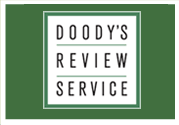|
|
|
eBook/Digital Version available from:
|
 Score: 96
Score: 96 |
 |
| The Public Health Crisis Survival Guide: Leadership and Management in Trying Times |
 |
ISBN: 978-0-19-069721-1,
212 pages,
Soft Cover
ISBN-10: 0-19-069721-0 |
 |
| Copyright: |
2018 |
 |
| Edition: |
1st |
 |
| Author: |
Sharfstein, Joshua M., MD |
 |
|
Specialties:
|
Health Care Administration
, Public Health |
 |
| Publisher: |
Oxford University Press |
|
4000 CentreGreen Way |
|
Cary, NC 27513 |
|
UNITED STATES |
|
http://global.oup.com/academic/contactus/find-a-rep |
 |
| List Price: |
$39.95 |
 |
| Google: |
|
|
 |
|
|
|
|
At A Glance
|
Firefighters are taught to battle flames. Police learn to respond quickly to 911 calls. So why are so few health officials prepared for public health crises? The Public Health Crisis Survival Guide is here to help. Whether it's an infectious disease outbreak, a scathing news report, or a sudden budget calamity, this book gives public health readers an honest and practical overview of what to do when things go wrong -- not just to survive, but to lead and thrive in the most difficult circumstances. ... Written by a voice of experience, practicality, and good humor, The Public Health Crisis Survival Guide will be a source of enrichment and reassurance for the next generation of public health students and practitioners.
|
|
Reviewer:
|
Janice Phillips,
PhD
(Rush University Medical Center)
|
 |
|
Range
|
Question
|
Score
|
| 1-10 |
Are the author's objectives met? |
10 |
| 1-10 |
Rate the worthiness of those objectives. |
10 |
| 1-5 |
Is this written at an appropriate level? |
5 |
| 1-5 |
Is there significant duplication? (1=significant, 5=insignificant) |
5 |
| 1-5 |
Are there significant omissions? (1=significant, 5=insignificant) |
5 |
| 1-5 |
Rate the authority of the authors. |
5 |
| 1-5 |
Are there sufficient illustrations? |
5 |
| 1-5 |
Rate the pedagogic value of the illustrations. |
5 |
| 1-5 |
Rate the print quality of the illustrations. |
5 |
| 1-5 |
Are there sufficient references? |
1 |
| 1-5 |
Rate the currency of the references. |
5 |
| 1-5 |
Rate the pertinence of the references. |
5 |
| 1-5 |
Rate the helpfulness of the index. |
5 |
| 1-5 |
If important in this specialty, rate the physical appearance of the book |
5 |
| 1-10 |
Is this a worthwhile contribution to the field? |
10 |
| 1-10 |
If this is a 2nd or later edition, is this new edition needed? |
N/A |
|
 |
|
Reviewer:
|
Janice Phillips,
PhD
(Rush University Medical Center)
|
 |
|
Description
|
| This is an in-depth discussion of public health events that have shaped how we handle potential or actual public health crises. Leading and managing in challenging times requires a special skill set and readers may ponder "How prepared are we?" The author provides information that can help public health officials answer this question while becoming better prepared to protect and advance the public's health. |
 |
|
Purpose
|
| The book is designed to provide public health officials with information for use before, during, and after times of crisis. The real-life scenarios and historical events in public health make this book a unique read, capturing the attention of even the most experienced public health officials. |
 |
|
Audience
|
| From public health students to more seasoned public health professionals, readers will find this book an essential tool for effective public health management and leadership. The author shares his expertise acquired while serving as the Health Commissioner of Baltimore City, the Principal Deputy Commissioner of the U.S. Food and Drug Administration, and the Secretary of Maryland's Department of Health and Mental Hygiene, and managing several high-profile public health crises. |
 |
|
Features
|
| The book's three sections, on history, management, and strategic considerations, are followed by seven appendixes. Section I outlines several historical events including the elixir sulfanilamide and thalidomide crises, the swine flu of 1976, and the discovery of HIV/AIDS. The public health response to these crises laid the foundation for subsequent crisis management protocols, policy changes, and many regulatory reforms. Section II is an in-depth overview of crisis management ranging from prevention to effective management. The author emphasizes that transparent communication is critical for establishing credibility with key audiences. He underscores that using external experts can be an invaluable asset during these times, as experts bring an independent source of evidence and validation. The author describes the value in carefully timing activities aimed at any type of reform to avoid misconceptions surrounding blame or timeliness of response during a crisis. Section III focuses on strategic considerations, including accepting blame and responsibility vs. shifting responsibility, which can influence an agency's reputation. The discussion of embracing crisis is an important one, as many advances and reforms in public health have resulted from crisis. The appendixes include such resources as the HIV/AIDS advocacy movement and several reprints of past public health crises in top-tier journals. |
 |
|
Assessment
|
| This unique book should be required reading for anyone working in public health. The lessons learned and historical overview can be useful for the prevention, early identification, and effective management during times of crisis. |
 |
|
|
|
|
|
|
|
